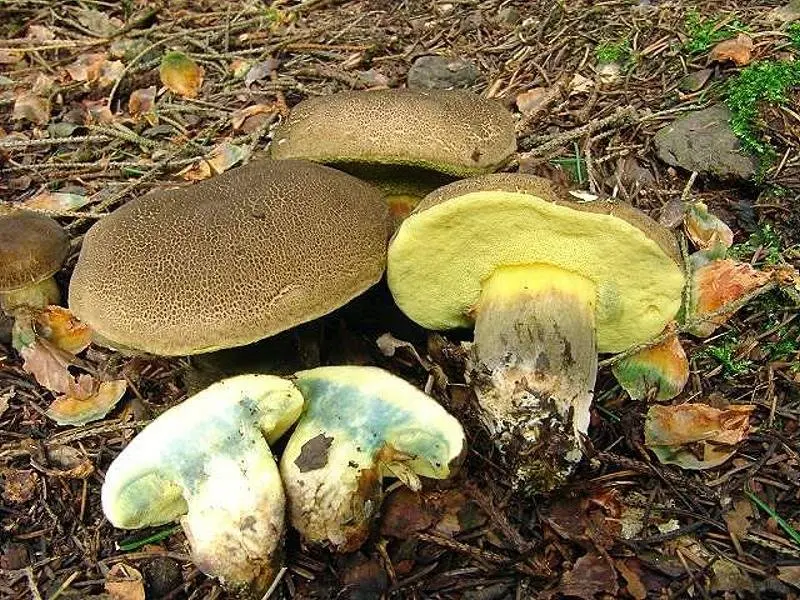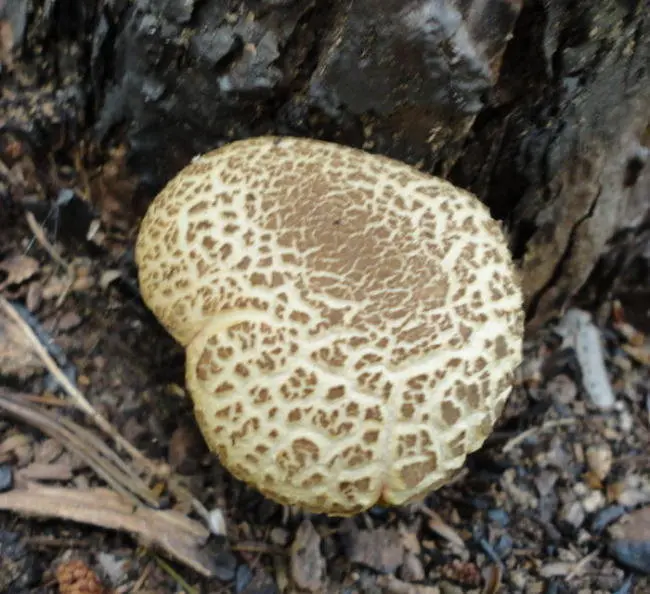Xerocomellus porosporus
- Division: Basidiomycota (Basidiomycetes)
- Subdivision: Agaricomycotina (Agaricomycetes)
- Class: Agaricomycetes (Agaricomycetes)
- Subclass: Agaricomycetidae (Agaricomycetes)
- Order: Boletales (Boletales)
- Family: Boletaceae (Boletaceae)
- Genus: Xerocomellus (Xerocomellus or Mohovichok)
- Type: Xerocomellus porosporus

Boletus porospore belongs to edible mushrooms from the genus mossiness mushroom.
It has a convex hat, which is up to 8 cm in diameter and is often presented in the form of a pillow or a hemisphere.
The skin of the porosporous boletus often bursts, due to which a network of these whitish cracks forms on its surface. This network of cracks is a characteristic feature and difference between the popsporous boletus and other fungi.
As for the external color, this mushroom has a dark brown or gray-brown color.
The flesh of the porosporous boletus is dense, whitish and fleshy. In addition, it has a faint fruity aroma.
The surface of the stem of the mushroom has a gray-brown color. Moreover, at the base of the leg, its surface is more intensely colored than all other areas.

A tubular layer of intense lemon-yellow color, tends to turn blue with light pressure.
The spore powder is olive brown in color and the spores themselves are spindle-shaped and smooth.
For a long time, scientists argued how to arrange the fungus boletus porosporus in the fungal system. Many researchers believed that it should be assigned to the genus Boletus. That is why the name “boletus” has traditionally been assigned to it.
At the same time, some mycologists often include representatives of the genus Mokhovik (lat. Xerocomus) in the genus boletus.

Porospore boletus grows mainly in coniferous forests and in mixed forests. Most often it can be found among the grass and on the moss.
The growth season of the porosporous boletus falls on summer-autumn, mainly from June to September.









